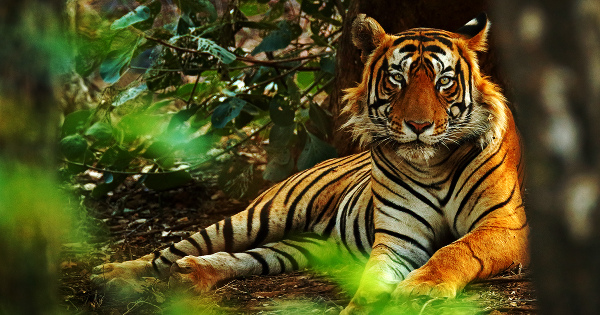BHOPAL: Amidst lockdown to contain the spread of the coronavirus disease, Bandhavgarh Tiger Reserve in Madhya Pradesh has recorded an overwhelming growth in population of tigers.
Forest officers have captured images of 41 tiger cubs inside the reserve. Newborns and those aged up to 12 months were counted.
“Reserve management had more time to focus on the conservation of wildlife,” say officers.
“The figures are certainly cause of enthusiasm but also a matter of concern since this tiger reserve had exceeded its carrying capacity long ago and the boom in population would only increase territorial conflicts,” they say.
Bandhavgarh Tiger Reserve and National Park is one of the most popular national parks in India with a large population of tigers.
Declared a national park in 1968, it attracts a large number of tourists in its vicinity. Birth of new cubs is in line with the country’s focus on increasing tiger population.
“Bandhavgarh has exceeded its carrying capacity, resulting in more infighting. Older tigers are moving out of Bandhavgarh in search of new habitats, and the migration can’t be stopped,” said an officer adding the only option is to expand the reserve area.
At least 25 tigers that moved out of protected areas have fallen prey to electric traps laid by poachers and villagers. Often, tigers are electrocuted by traps set by hunters. Despite the rising toll — 47 in four years, including 13 in 2018 and 17 in 2019 so far — Madhya Pradesh has clawed back to top spot.
Tiger movement was recorded in 1,432 forest beats across the state in the initial phase of the app-based All India Tiger Assessment 2018. Madhya Pradesh was declared “Tiger State” of India, having pipped Karnataka by just two tigers — 526 to 524 — in the All India Tiger Estimation Report 2018 announced by Prime Minister Narendra Modi in 2019.
State was first declared a ‘Tiger State’ in 1995 when it harboured nearly 20% of India’s tiger population and nearly 10% of the world’s, but now the scene has changed.
Experts caution that most reserves in MP have reached saturation limit and more tigers will fall to infighting.
You may also like
-
New Heat-Based Approach To Cancer Treatment Can Reduce Chemotherapy Doses
-
Scientists Take A Major Step Towards Unification Of Classical & Quantum Gravity
-
India Graphene Engineering and Innovation Centre (IGEIC) Under the Vision of Viksit Bharat@2047 Launched
-
New High-Performance Gas Sensor can Monitor Low Level Nitrogen Oxides Pollution
-
Antidepressant Drug can be Repurposed for Treating Breast Cancer
